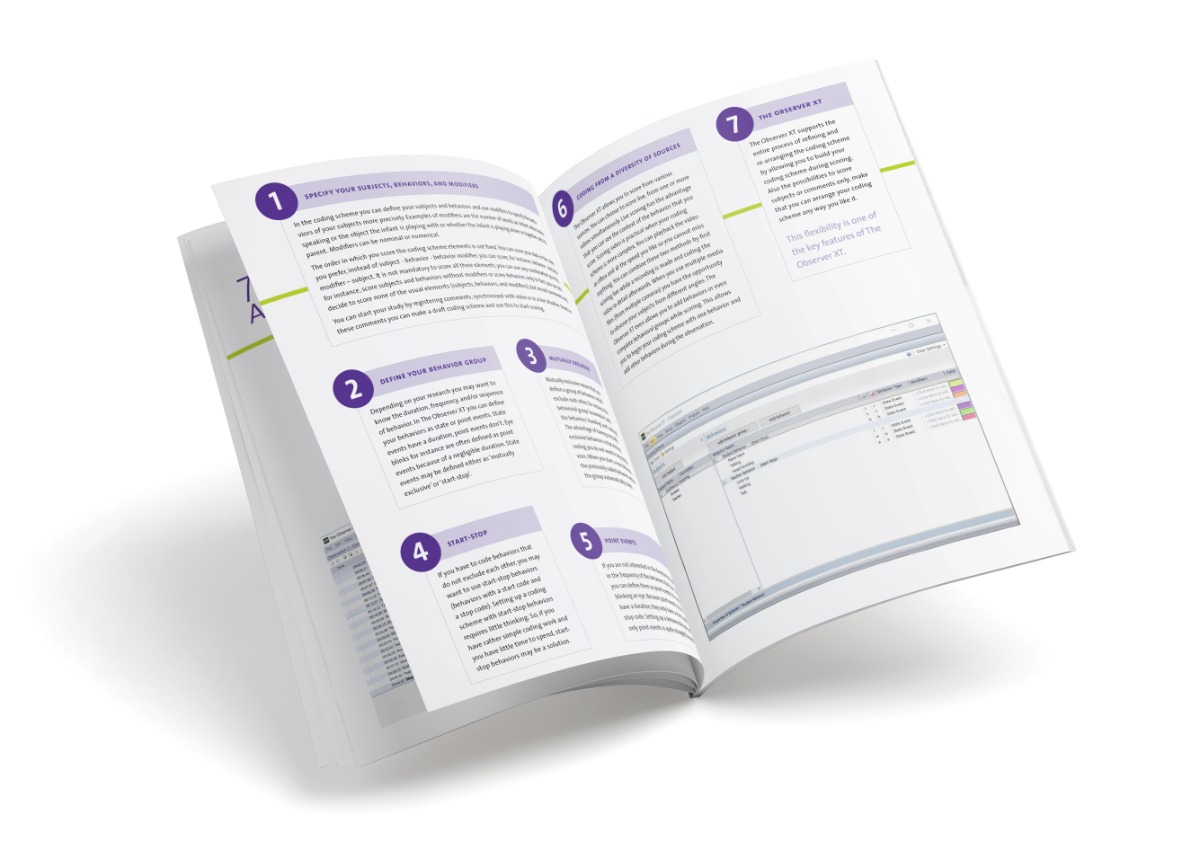Solutions for
Doctor-patient interaction
Effective communication between doctor and patient is essential to achieve a high-quality healthcare. Patients who understand their doctors are more likely to acknowledge health problems, understand their treatment options, modify their behavior accordingly, and follow their medication schedules.
Both the attitude of the patient and the doctor are important. Positive interactions help build a relationship, establish trust, and support the exchange of accurate and relevant information.


Observing doctor-patient interaction
The use of video technology in doctor-patient interaction research offers important advantages to scientists in unraveling complex behavior patterns and finding relationships between behaviors, effectiveness of interventions, and more. Regardless whether the observation takes place in a lab or on-site.
By using video, no behaviors are overlooked by the researcher, as both video and audio signals can be visualized together and can be repeatedly analyzed to capture every desired behavior in great detail.
Viso® is the tool that allows for video recording in one or multiple rooms. The Observer® XT is indispensable for analyzing the observations.
Video observations with Viso
Viso is the ideal solution for high quality recording of video and audio in multiple rooms. It creates the perfect set up for your consulting or medical simulation rooms.
You can create synchronized recordings from any angle from up to four IP cameras in each room to capture the actions and reactions of doctor and patient.
View the recordings, including markers and comments, both in real-time and immediately afterwards during debriefing.


Synchronize data streams
For patients, receiving medical information from their doctor is important. However, patients often feel nervous when they have a conversation with their doctor. Researchers monitor physiological data streams, such as heart rate or blood pressure, along with the video, to assess the patient’s emotions in their behavioral context. The Observer XT synchronizes all that data.
Moreover, nonverbal and verbal behavior can be coded with The Observer XT. Transcribe conversations and combine this information with for instance the behaviors of the doctor and the patient.
Free white paper
7 tips to set up a coding scheme
A coding scheme is the actual measuring instrument for example to evaluate nonverbal and verbal behavior.
In this free white paper, we will explain how to set up a coding scheme, and we present several examples of studies that used a coding scheme as a tool.

"The Observer XT has provided us with an accurate means of assessing hospital patient ambulation, the first to do so."
Dr. Roger L. Brown|University of Wisconsin-Madison, USA
Facial expression analysis
Emotions are a crucial part of nonverbal behavior. Facial expression analysis software like FaceReader is ideal for collecting this data.
The software automatically analyzes the six basic facial expressions as well as neutral, and contempt. It also offers the possibility to create custom expressions, such as pain, excitement, interest, and confusion.
Interesting publications
Diverse scientific articles citing Noldus products are published in renowned journals each week. The following list is only a small selection of scientific publications in different research fields such as doctor-patient communication, nursing studies, and patient education.
- Crapanzano, K., et al. (2018). Internal Medicine Residents’ Attitudes Toward Simulated Depressed Cardiac Patients During an Objective Structured Clinical Examination: A Randomized Study. Journal of General Internal Medicine, 33 (6), 886-891. https://doi.org/10.1007/s11606-017-4276-7.
- Medendorp, N.M., et al. (2020). ‘We don’t know for sure’: discussion of uncertainty concerning multigene panel testing during initial cancer genetic consultations. Familial Cancer, 19, 65-76. https://doi.org/10.1007/s10689-019-00154-4.
- Szmulewicz, C., et al. (2021). Communication of bad news in relation with surgery or anesthesia: An interdisciplinary simulation training program, Journal of Gynecology Obstetrics and Human Reproduction, 50(7). https://doi.org/10.1016/j.jogoh.2021.102062.
Relevant blogs

Three examples of nurse-patient interaction research
The use of video technology in nurse-patient interaction research offers important advantages to scientists in unraveling complex behavior patterns. Learn more!
Evaluating the effectiveness of simulation in healthcare
Teamwork is important in many occupations but it is crucial when working under pressure. Most of us can only imagine how stressful it could be when working as a fire fighter or operating room nurse.
 English
English German
German French
French Italian
Italian Spanish
Spanish Chinese
Chinese
